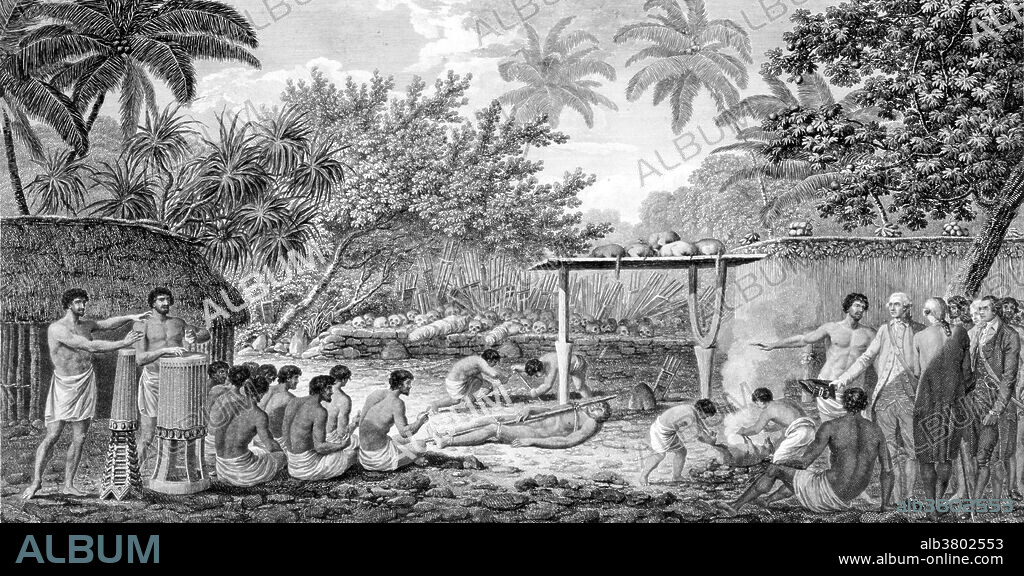alb3802553
Captain James Cook Witnesses Human Sacrifice, 1773

|
Zu einem anderen Lightbox hinzufügen |
|
Zu einem anderen Lightbox hinzufügen |



Haben Sie bereits ein Konto? Anmelden
Sie haben kein Konto? Registrieren
Dieses Bild kaufen.
Nutzung auswählen:

Titel:
Captain James Cook Witnesses Human Sacrifice, 1773
Untertitel:
Siehe automatische Übersetzung
Eentitled: "Human sacrifice in a Morai in Otaheite." Captain James Cook (November 7, 1728 - February 14, 1779) was an English explorer, navigator and cartographer in the Royal Navy. He mapped lands from New Zealand to Hawaii in the Pacific Ocean in greater detail and on a scale not previously achieved. He surveyed and named features, and recorded islands and coastlines on European maps for the first time. He displayed a combination of seamanship, superior surveying and cartographic skills, physical courage and an ability to lead men in adverse conditions. In 1779 he was attacked and killed by the natives in Hawaii. Originally regarded as a god by the natives, his heart was divided between tribal chiefs and eaten. His hands were stuffed with salt to preserve them and many of his bones were placed around the island, given to other significant tribal chiefs. His remains were then returned to his crew in dignified fashion, with a cloak of white and black feathers, where they were placed in a small coffin and buried at sea.
Bildnachweis:
Album / Science Source
Freigaben (Releases):
Model: Nein - Eigentum: Nein
Rechtefragen?
Rechtefragen?
Bildgröße:
5250 x 2682 px | 40.3 MB
Druckgröße:
44.5 x 22.7 cm | 17.5 x 8.9 in (300 dpi)
Schlüsselwörter:
18. JAHRHUNDERT • 18. JH. • BERÜHMT • BERÜHMTE PERSÖNLICHKEIT • ENTDECKER • ERKUNDUNG • EUROPAEER (F M) • EUROPAEER • EUROPÄER (F M) • EUROPÄER • EUROPÄISCH • FORSCHER • ILLUSTRATION • ILLUSTRATIONS • KAPITAEN • KAPITAEN, MILITAER • KAPITÄN • KARTHOGRAFIE • KARTOGRAFIE (KARTE) • KARTOGRAPH • KARTOGRAPHIE • MANN • MENSCHENOPFER • NAVIGATION • NAVIGATOR • NOTABEL • PERSON • PERSöNLICHKEITEN • PERSÖNLICHKEITEN • PROMINENZ • WISSENSCH.: KARTOGRAPHIE • WISSENSCHAFT: ENTDECKER • WISSENSCHAFT: FORSCHER
 Pinterest
Pinterest Twitter
Twitter Facebook
Facebook Link kopieren
Link kopieren Email
Email
